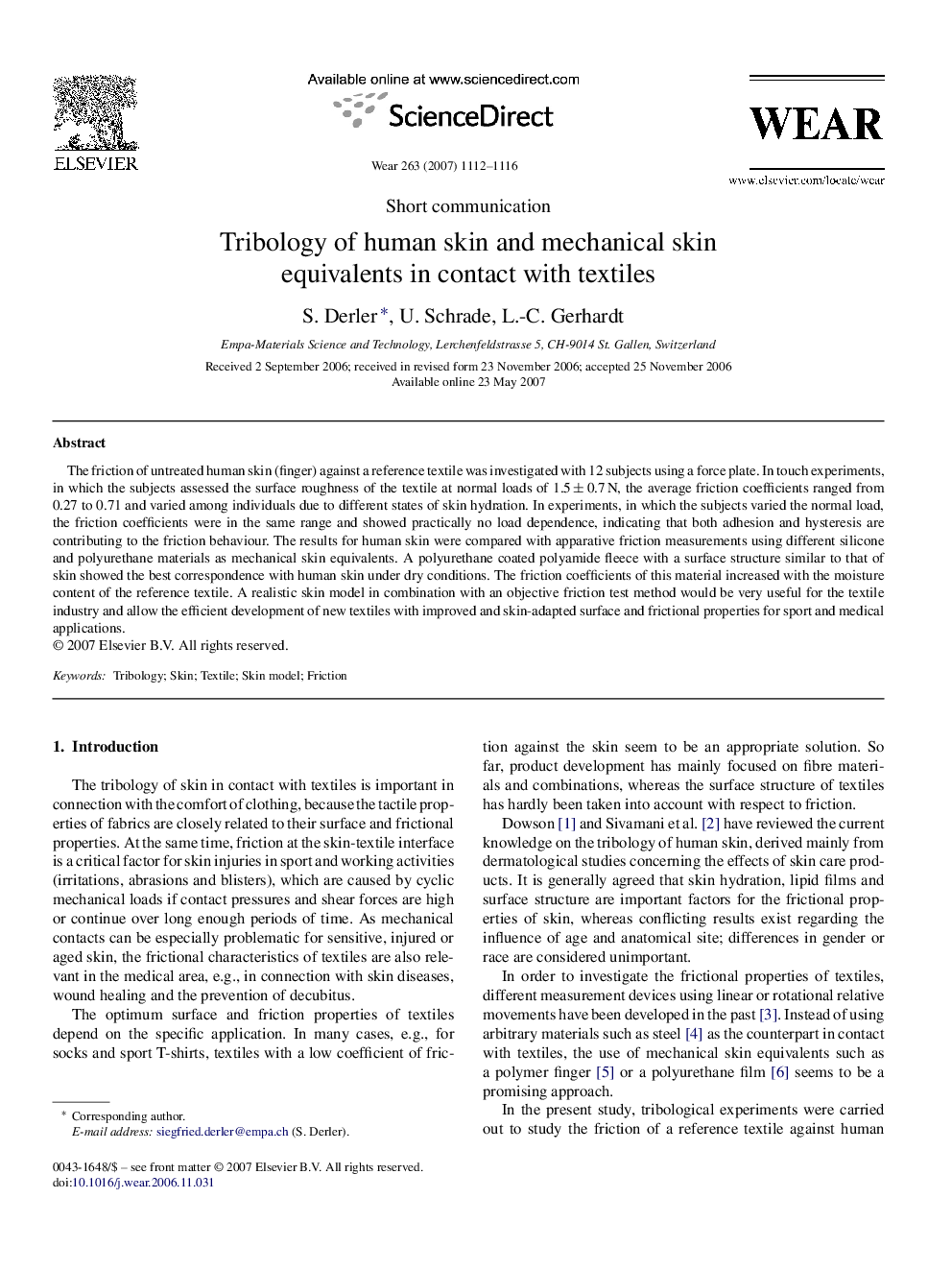| Article ID | Journal | Published Year | Pages | File Type |
|---|---|---|---|---|
| 620004 | Wear | 2007 | 5 Pages |
Abstract
The friction of untreated human skin (finger) against a reference textile was investigated with 12 subjects using a force plate. In touch experiments, in which the subjects assessed the surface roughness of the textile at normal loads of 1.5 ± 0.7 N, the average friction coefficients ranged from 0.27 to 0.71 and varied among individuals due to different states of skin hydration. In experiments, in which the subjects varied the normal load, the friction coefficients were in the same range and showed practically no load dependence, indicating that both adhesion and hysteresis are contributing to the friction behaviour. The results for human skin were compared with apparative friction measurements using different silicone and polyurethane materials as mechanical skin equivalents. A polyurethane coated polyamide fleece with a surface structure similar to that of skin showed the best correspondence with human skin under dry conditions. The friction coefficients of this material increased with the moisture content of the reference textile. A realistic skin model in combination with an objective friction test method would be very useful for the textile industry and allow the efficient development of new textiles with improved and skin-adapted surface and frictional properties for sport and medical applications.
Related Topics
Physical Sciences and Engineering
Chemical Engineering
Colloid and Surface Chemistry
Authors
S. Derler, U. Schrade, L.-C. Gerhardt,
